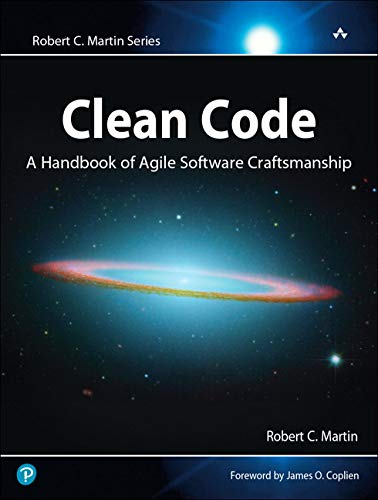On My Bookshelf - 'Clean Code - A Handbook of Agile Software Craftsmanship' by Robert Martin
"Clean Code: A Handbook of Agile Software Craftsmanship" by Robert Martin, often affectionately referred to as "Uncle Bob" in the software community, is an enlightening guide not just for budding engineers but for professionals at any stage of their journey.
The overarching message is clear: prioritize clean code. But what does "clean" really mean in the context of coding? Here are some of the defining elements and key takeaways from the book:
Readability: At its core, code is a form of communication. Clean code should read like well-written prose. This ensures that any developer, whether they wrote the code or not, can understand its purpose and functionality with ease.
Meaningful Names: Naming is pivotal. A variable named
xtells you nothing, butuserAgeis descriptive. The names you choose should reveal intent and make the code's functionality evident.Functions Should Do One Thing: A well-written function has a single responsibility. By ensuring each function is concise and serves one purpose, you maintain clarity and reduce potential points of failure.
Error Handling: Proper error handling is an essential aspect of clean code. It's not just about catching errors but doing so in a manner that doesn't introduce more complexity or obscure the main logic.
Avoid Duplication: The DRY (Don't Repeat Yourself) principle isn't just about reducing the amount of code but ensuring that there's a single, authoritative source of truth in the system.
Comments Aren't Always Good: Contrary to popular belief, comments can sometimes be detrimental. If you're using comments as a crutch to explain complex code, it's often a sign that the code itself isn't clean or clear.
Limit Function Arguments: The fewer arguments a function has, the easier it is to test and use. If a function is expecting numerous inputs, it might be doing too much.
Embrace Testing: Automated tests provide a safety net, ensuring that as you refactor and clean your code, you aren't introducing new bugs.
Concise Code: Verbosity doesn't equate to clarity. Clean code is often concise, devoid of unnecessary repetition or fluff.
Continuous Refactoring: Clean code isn't a destination but a journey. As you gain new insights or as requirements change, continuously refactor your code to keep it clean.
By internalizing the principles of clean code from the early stages of your career, you don't just set the foundation for professional growth. You pave the way for more efficient, maintainable, and scalable software projects. Remember, in the world of software, the quality of your code often mirrors the quality of the end product.

